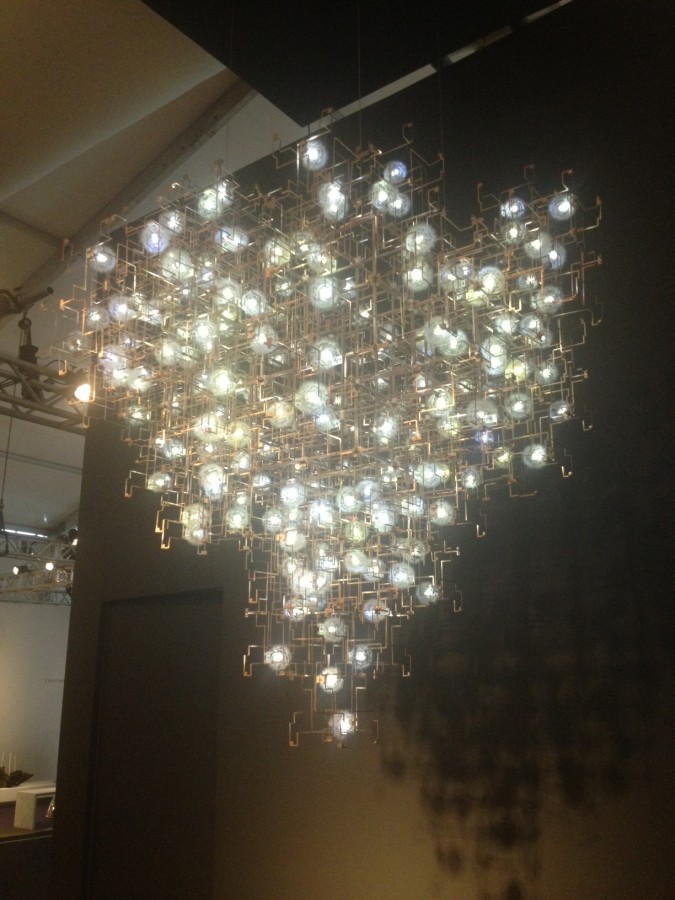It is easy to miss the highlights when you don’t know where to look. At Design Miami/ 2012, there were many, and the guided tours I led sought to help visitors navigate the fair by taking a deep dive into the content, illuminating themes and historical continuity in the contemporary work. What follow are five highlights from the tour, representing a range of themes I found throughout the work on display – nature, materials, process, and play.

Fragile Futures Chandelier 3.6. Designed by Lonneke Gordjin & Ralph Nauta, 2012. Carpenters Workshop Gallery.
This lighting series give form to “the cloud,” that ethereal space where our data lives. Or at least I imagine it to. Composed of dandelion heads harvested from fields in Holland, freeze-dried and adhered to LED lights, the chandelier encapsulates the LEDs in a rational brass grid that is at once delicate and confining. Fragile Futures is as much about nature as it is about technology and in many ways suggests that both benefit from one another.

Innerblow Bench. Designed by nendo, produced by Lasvit, 2011. Carpenters Workshop Gallery.
In its Innerblow collection, Japanese design firm nendo worked with glassblowers at Lasvit to experiment with forms of traditional glass. Starting with a white lacquered steel box, eight glassblowers simultaneously blew glass into the box, generating eight distinct shapes that hug one another in a solid form. The glass was left in place and flipped over, becoming the bench’s flat sitting surface, which required no adhesives or fasteners. Throughout the fair, contemporary material experimentation was evident, particularly in glass.

Silverware Vases. Designed by Studio Glithero, 2012. Galerie VIVID.
Designers also experimented with new processes, in evidence throughout the fair. Glithero created the pattern on their hand-turned porcelain vases through a technique they first experimented with in their Blueware series. The vases were coated in a photo-sensitive material, onto which the designers arranged and taped down seaweed specimens. The vases were then exposed to a light spectrum that developed the silver salts in the material, leaving behind a photogram of the seaweed that revealed the delicacy and texture of each specimen.

Break, from the Funiture series. Designed by Snarkitecture, 2012. Volume Gallery.
Snarkitecture, the architecture firm behind this year’s entry pavilion, Drift, makes their first foray into the scale of domestic objects. Like their architecture, the Funiture object series demonstrates the firm’s manipulation of program and function so as to elicit confusion and confound our expectations. What seems unstable, is sound. What appears on the verge of ruin, is functional. In Break, a cabinet is cracked and buckles, but still functions perfectly, even down to the angle of the buckle, calculated precisely to ensure that objects do not slide towards the center.

Shift table. Designed by Sylvain Willenz, produced by CIRVA, 2012. Victor Hunt Gallery.
Designer Sylvain Willenz’s experimentations with glass play not only with the formal qualities of the material, but notably with the processes by which he manipulated it. The Shift collection of side tables has a complex asymmetrical form not typically seen in glass, with a raquet-shaped top offset from the table’s oblong base. Yet the volumes are seamlessly connected, blown from a single piece of glass into a complex steel mold with moving parts, developed specifically for the project. The tables’ opacity, which further confounded expectations about how the material performs, was achieved by sanding the interior of the forms.